With the State of the Word coming up in less than a month, I thought it would be fun to revisit a previous post of mine from 2019 about what makes up a good conference badge and deliver the “State of the Badge” as I see it.
Since publishing that post, we’ve had a global pandemic, 15 major versions of WordPress, 7 in person flagship WordCamps, a community summit, two US presidential elections, and 5 unique World Series winners. Let’s dive in!
To start the post, let’s revisit what I feel constitutes a useful, quality badge, note some new additions to that list, and I’ll share what some of my badges have looked like recently.
Note: This feedback is not aimed at any specific event or organizing team. This is meant to constructively critique and think through how we can make badges better at WordCamps and other events.
Recap: What makes a good conference badge?
Here are the factors that are important to me as summarized in my previous post:
- Name
- Avatar (easily recognized, visual connection)
- Durability (shouldn’t break or fall off your lanyard)
- Company
- Social media handles (I noted Twitter only at the time)
- No sensitive personal information (like email), or a way for sponsors to access that (I should be able to control how someone can follow up with me)
In summary, badges should contain information that allows attendees to:
- Recognize a preexisting connection in person (even if for the first time).
- Easily recognize someone you’d like to create a new connection with.
- Easily continue conversations post-event after interacting in-person.
- Provide attendees with all of the information they may need while at a conference.
The State of the Badge
Let’s look at the current state of badges in 2024. Here are some of my badges since my last post in 2019:
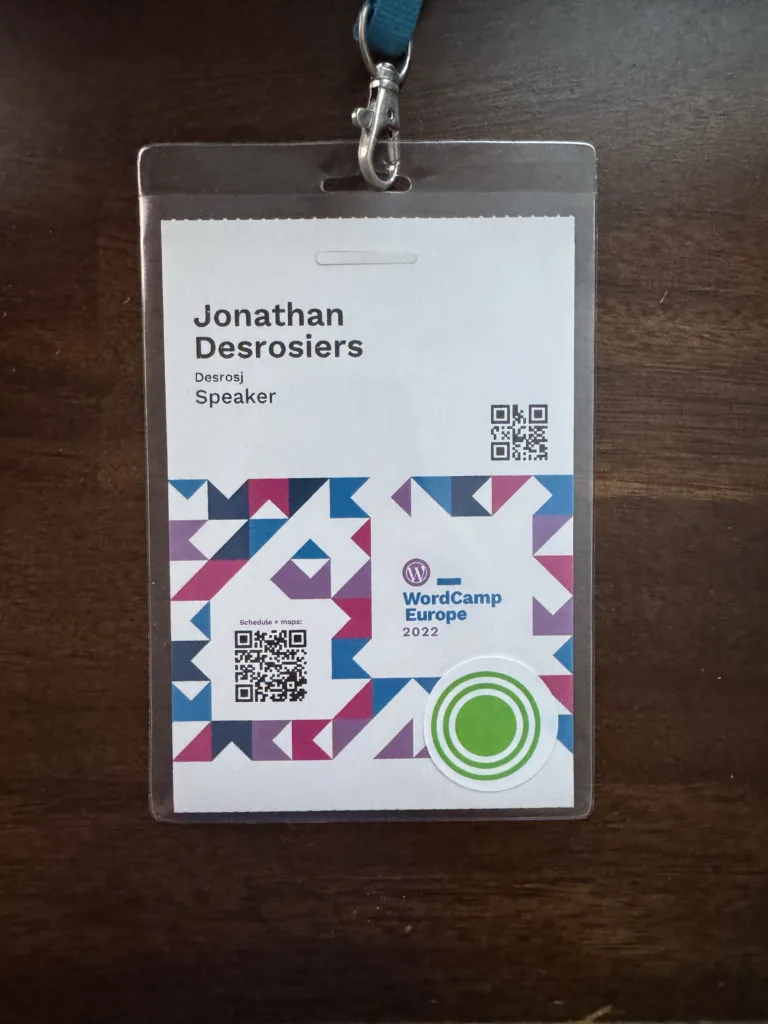
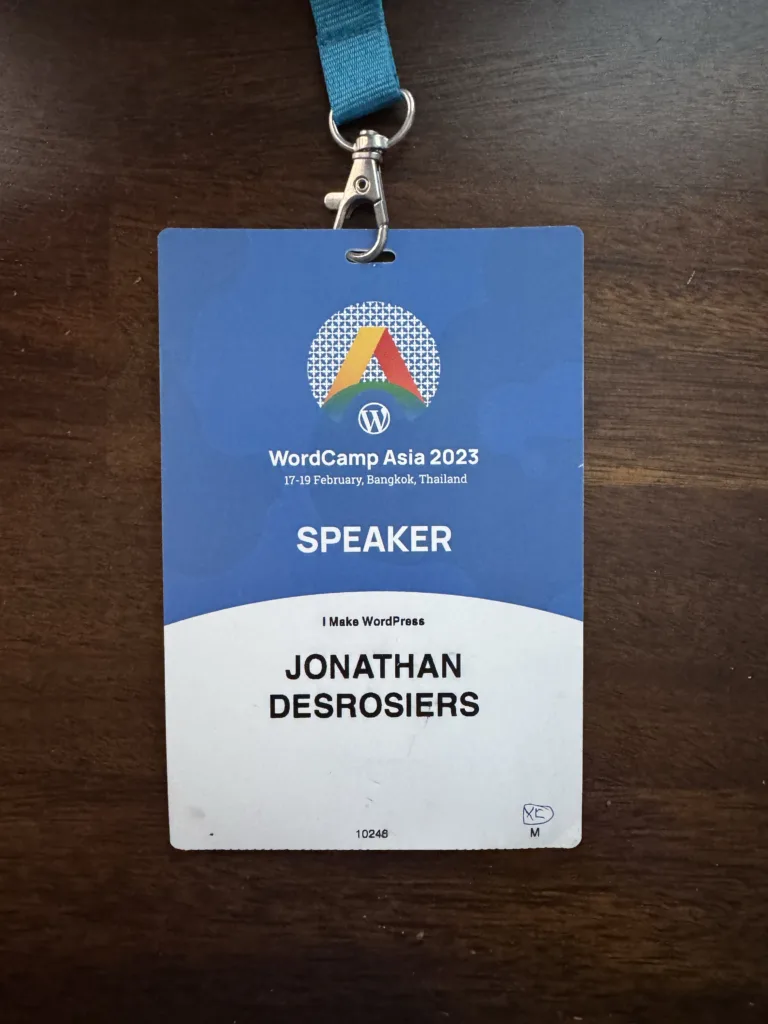
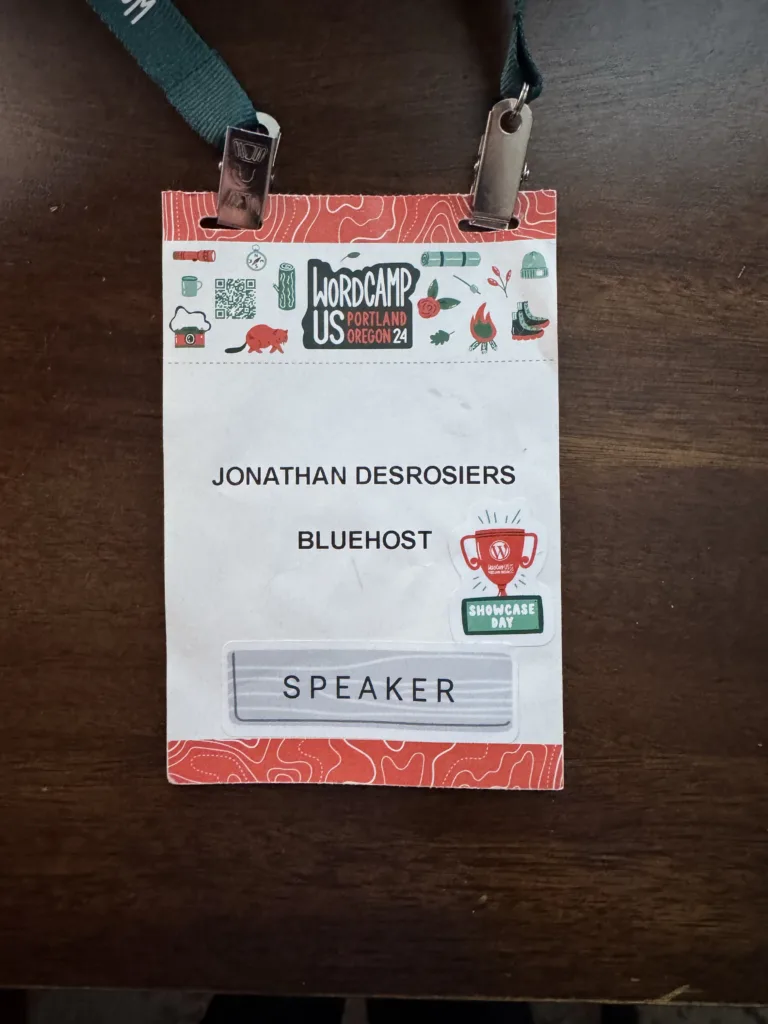
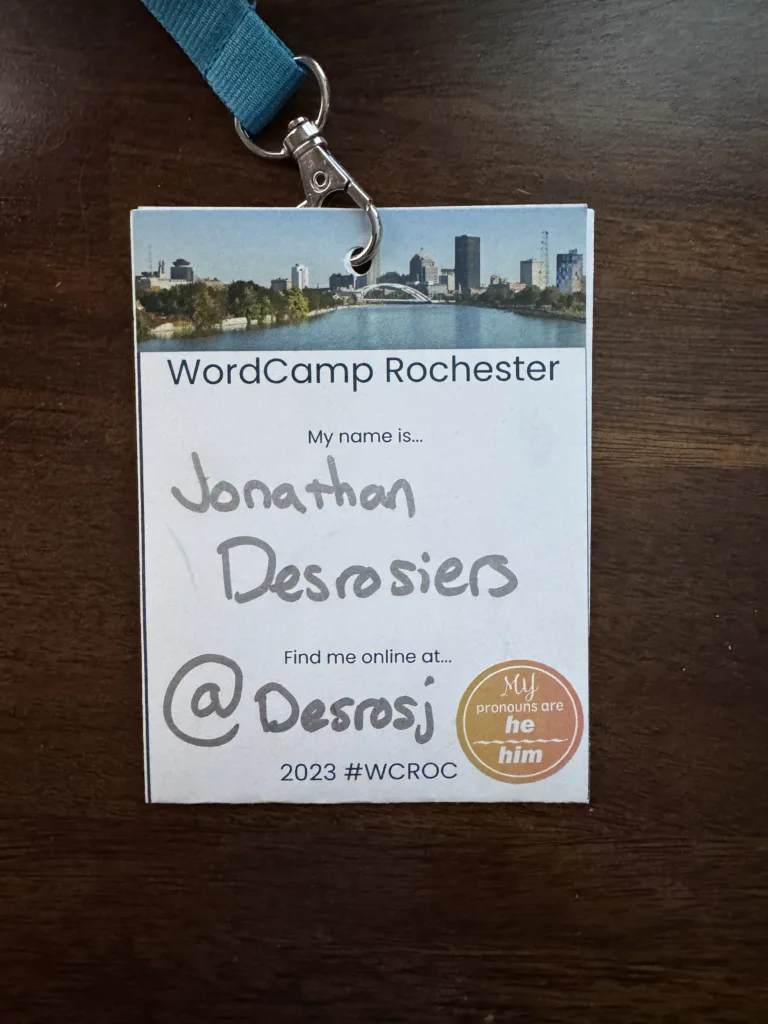
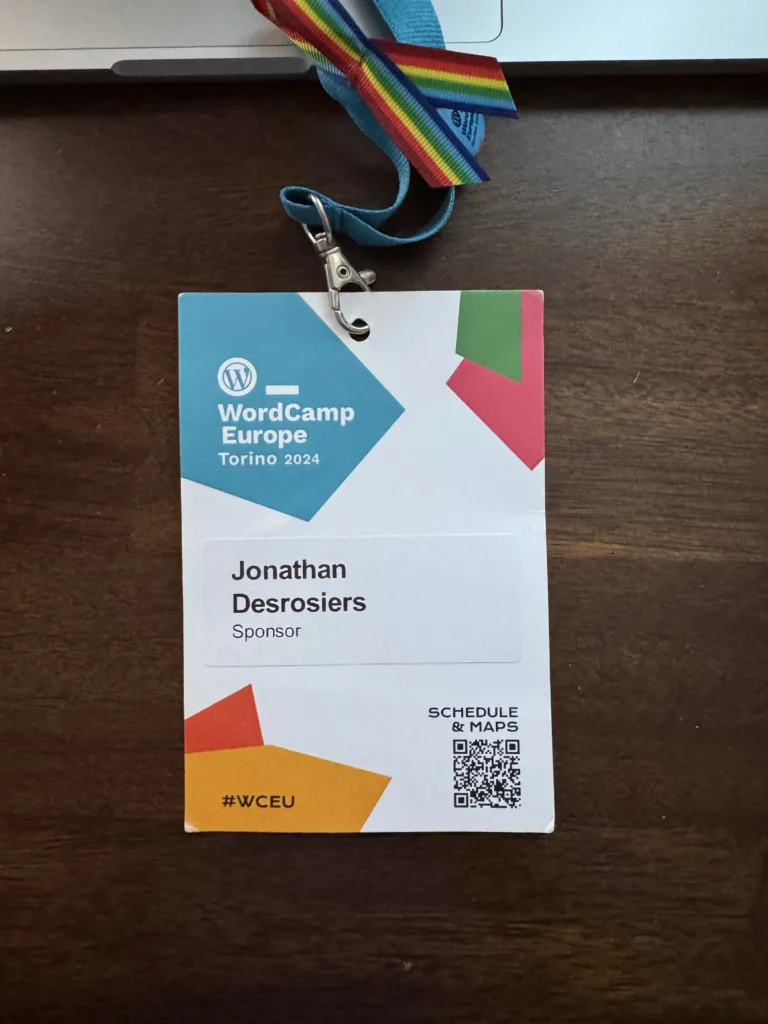
The current best practice continues to be either printing badges at the venue when a registrant checks in, printing a label for the attendee to stick onto a generic badge, or some combination of the two.
Despite our best efforts, I feel like badges have continued to get worse. It’s no one’s fault. When I talk to organizers, I’ve heard that good ones are expensive, and planning/designing/printing them can be a lot of work. Smaller camps have near-zero budget for badges, so attendees usually just write in their own names.
There’s one thing I’d like to add to my previous list that surprised me was missing: including someone’s website(s) or a way to easily access them. It doesn’t make sense to print out full URLs, but it can be an important way to link to your portfolio or continue a connection after the event.
My Favorite Badge to Date
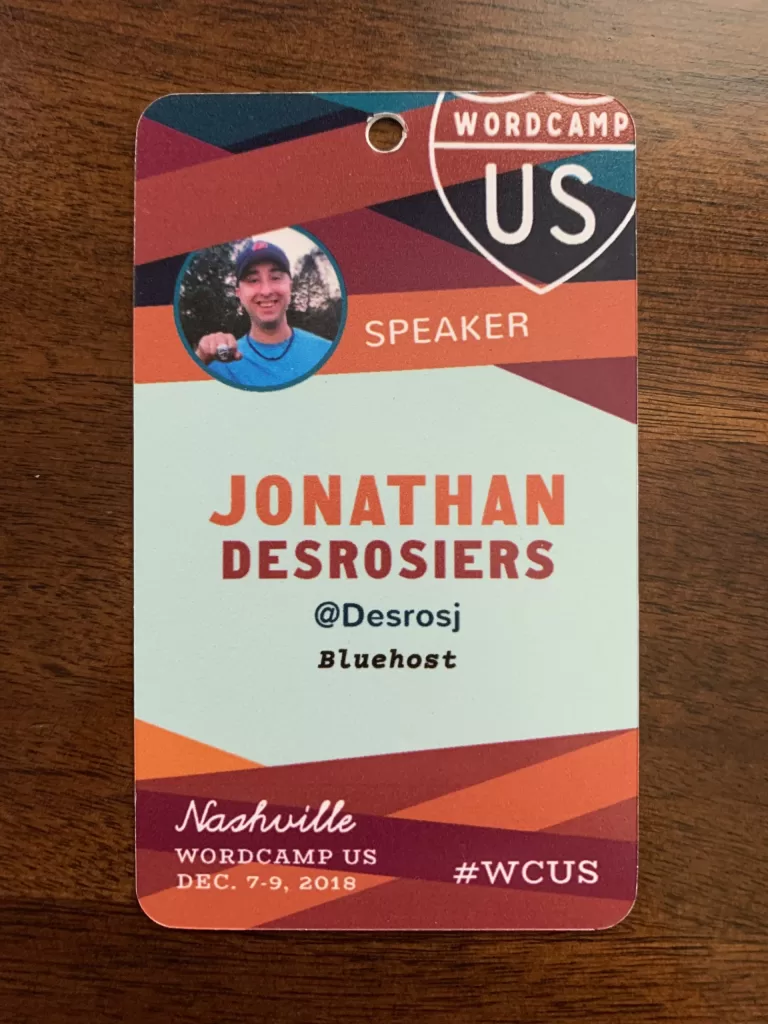
I keep thinking back to WordCamp US 2018’s badge. This one continues to be one of my favorites. It was very durable (thick plastic), colorful, and contained most of the elements I feel are required for an effective badge.
Unfortunately, these were very expensive. But what if we made this style of badge the expectation? What if they were reusable and not event specific? What if badges were not printed at the event? What if you brought your badge with you?
Proposal: Semi-Permanent Reusable Badges
My proposal is to design some generic, customizable badges that can be reused for every event. The badges would be made of high quality, durable, recyclable materials and designed to last for years, not 2-3 days. This would also mean that the quality of badges for all WordCamps would be equal, regardless of size or budget.
There would be a consistent layout making it easier for each event to help attendees customize their badges. One example could be a spot for a QR code linking to event specific info (schedule, maps, etc.) as seen on the WCEU badges above. Each event could have branded QR code stickers that attendees receive at check in to stick on their badge. They could even have badge-sized stickers with event branding that attendees could choose to use.
But Generic is boring
Generic does not have to mean boring!
- There can be several default color schemes, just like the WordPress Dashboard has.
- There could be a different design for each Make WordPress theme, allowing team members to indicate their areas of focus contributing to the project.
- There could be variations for developers, designers, marketers, theme authors, agency owners etc. This would make it easier to know some of the ways that a person uses WordPress at the start of a conversation.
- There could be exclusive, limited edition, event-specific variations that can only be purchased by those who have purchased a ticket. Collect them all, if you’d like!
- There could be a variation where you select your favorite Wapuu!
- There could be variations allowing attendees to celebrate aspects of their identity, such as nationality or being LGBTQ+.
- Event sponsors could be entitled to having their own, brand-focused badge designs.
On the more creative side of this concept, there could also be a “badge design directory” (think Block Pattern Directory) where community members can submit their own badge designs for others to use (requiring moderation of course).
But I thought that these badges are expensive?
They are. But here’s what I have in mind!
Your first WordCamp badge is free, unless you choose to add something that requires an up charge (more on this later)! Event sponsorships (and possibly these up charges) help subsidize the cost of this initial burden. It could be mailed to you, or waiting for you at the next flagship event. After (hopefully) ~1 year of events, this cost would mostly only apply to first time attendees.
What if I need to change the information on my badge?
If you change company, change avatar, change name, or anything else on your badge becomes inaccurate, you can either use a label and correct it yourself or purchase a new one at cost.
Replacement badges would ship directly to your home, or possibly be waiting for you at the next flagship camp (logistics for that may be tough).
There could be incentives built into sponsorship to provide a discount on a new badge when purchasing an individual sponsorship for a WordCamp or donating to the WordPress Foundation.
Could I have multiple?
Sure! You can buy as many as you want. Maybe you want to have one showing your Make WordPress team for Contributor Days, and one with your discipline (developer, designer, etc.) for regular camp days. Or maybe you have one that you wear when sponsoring, and one that you wear when you’re just an attendee. Keep a spare in your suitcase in case you lose one. Or collect them like memorabilia! I personally enjoy collecting things and keep all of my conference badges on a hook in my office.
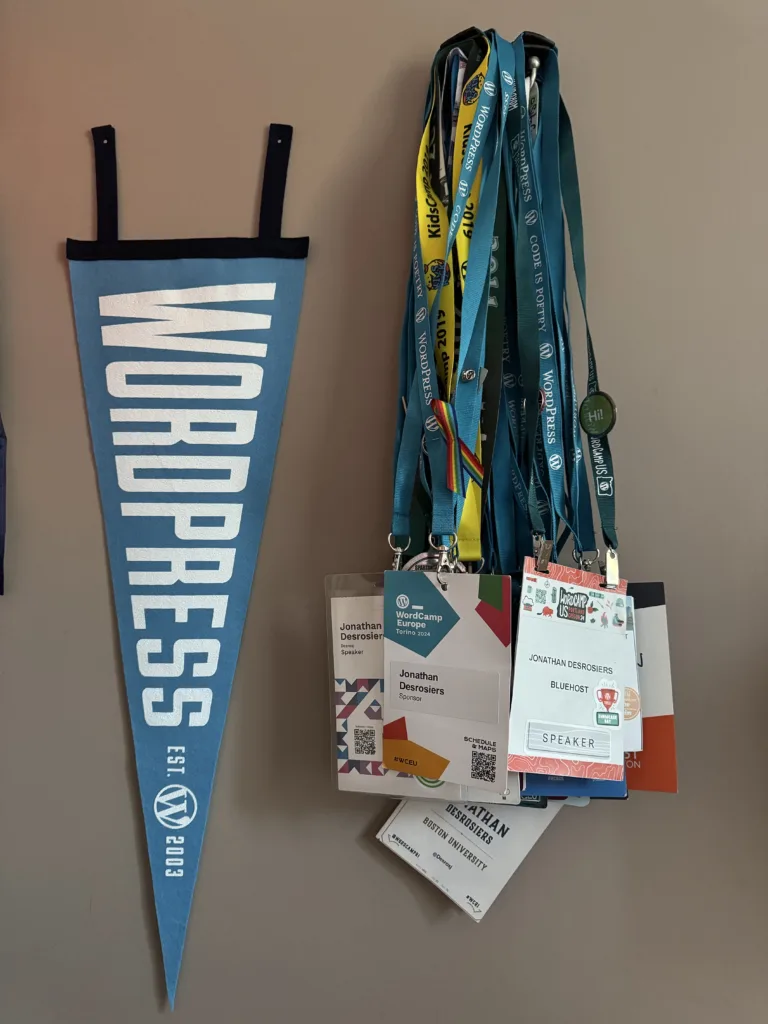
What did you mean by up charge?
There are several things that could be added to badges with an up charge. This could include a company logo, or maybe a a QR code that points to a URL of your choice. The QR code could even automatically point to your w.org profile URL. This would allow you to change it whenever you’d like!
Another option would be to charge extra for a Linktree-like page where you could include as many links as you’d like (Gravatar profiles may be nice for this).
The cost to provide these additional elements will be minimal. So any revenue generated from this could help subsidize new badges for first time attendees, or be put towards something like scholarships to attend future events.
What if I forget my badge?
For situations where someone registers for the event too late, forgets their badge at home, or loses it, the events team could continue to have generic, printable badges for providing a temporary one.
How would organizers know who paid for/belonged at the event?
There would need be something to indicate the person paid for their ticket and was checked in by a volunteer. This could be the branded QR code for event-specific information like I mentioned earlier, something else.
I’m not sure how it works for other states, but in Massachusetts, you receive a sticker with a 2 digit year every time your vehicle registration renews. Each year is a different color, and it’s always placed over the previous one in the top right of the license plate. The sticker when combined with the month in the top left provides easy visual indication that your registration is not expired.
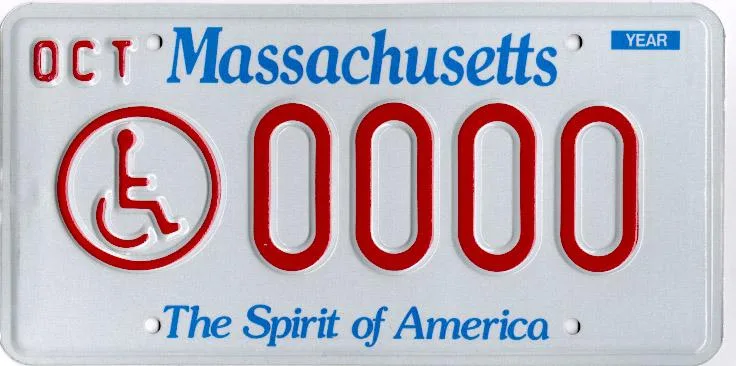
Q&A Part of the Session
As with the State of the Word, let’s have an asynchronous Q&A session! Asynchronous also allows for statements and not just questions! So feel free to share your detailed thoughts about the State of Badges!
What would you change about badges? How would you change my idea? Is the whole thing bad idea? How would you implement it? Let me know in the comments!
Featured image credit: CC0 licensed photo by Mark Westguard from the WordPress Photo Directory.
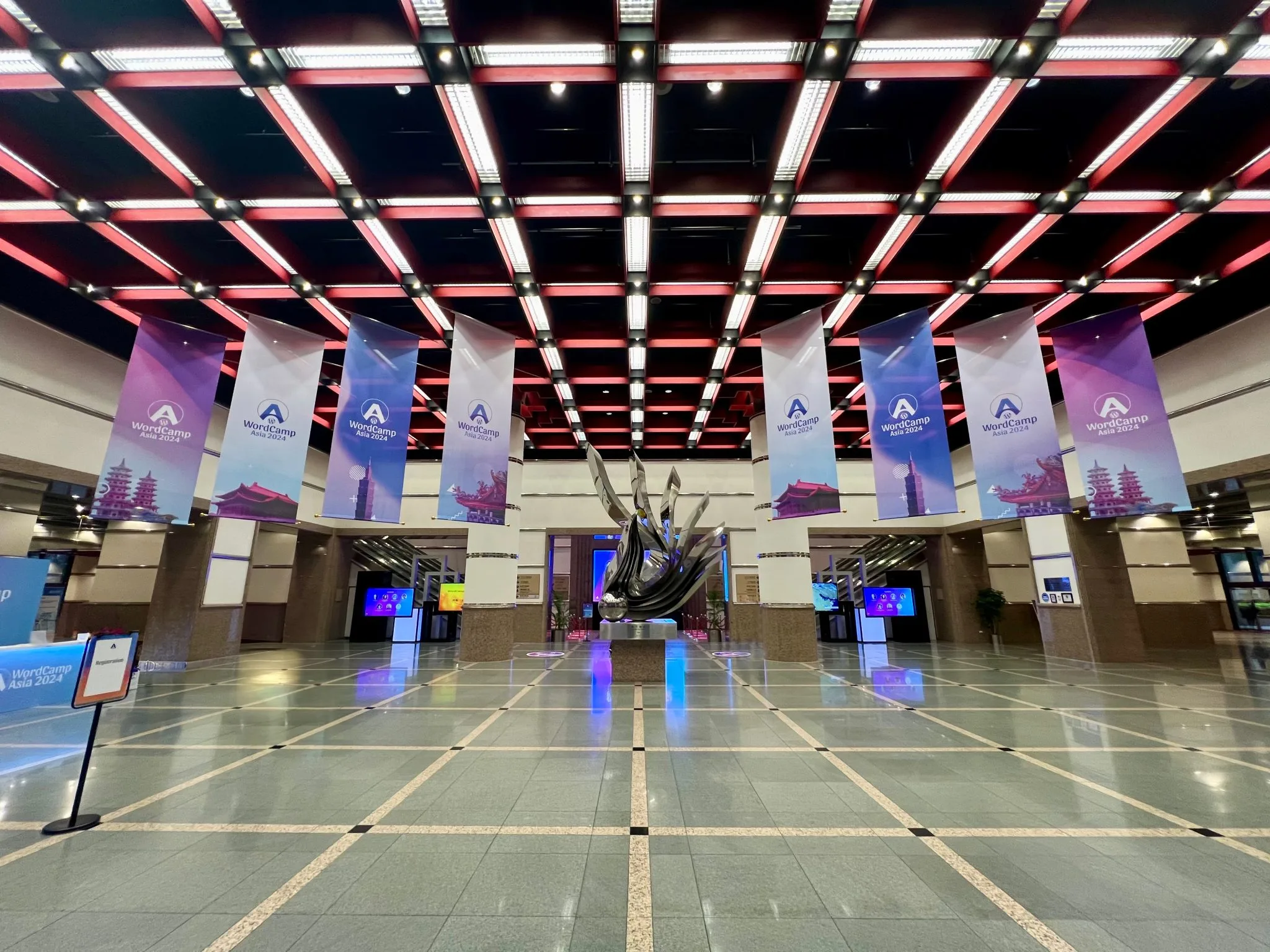
Leave a Reply